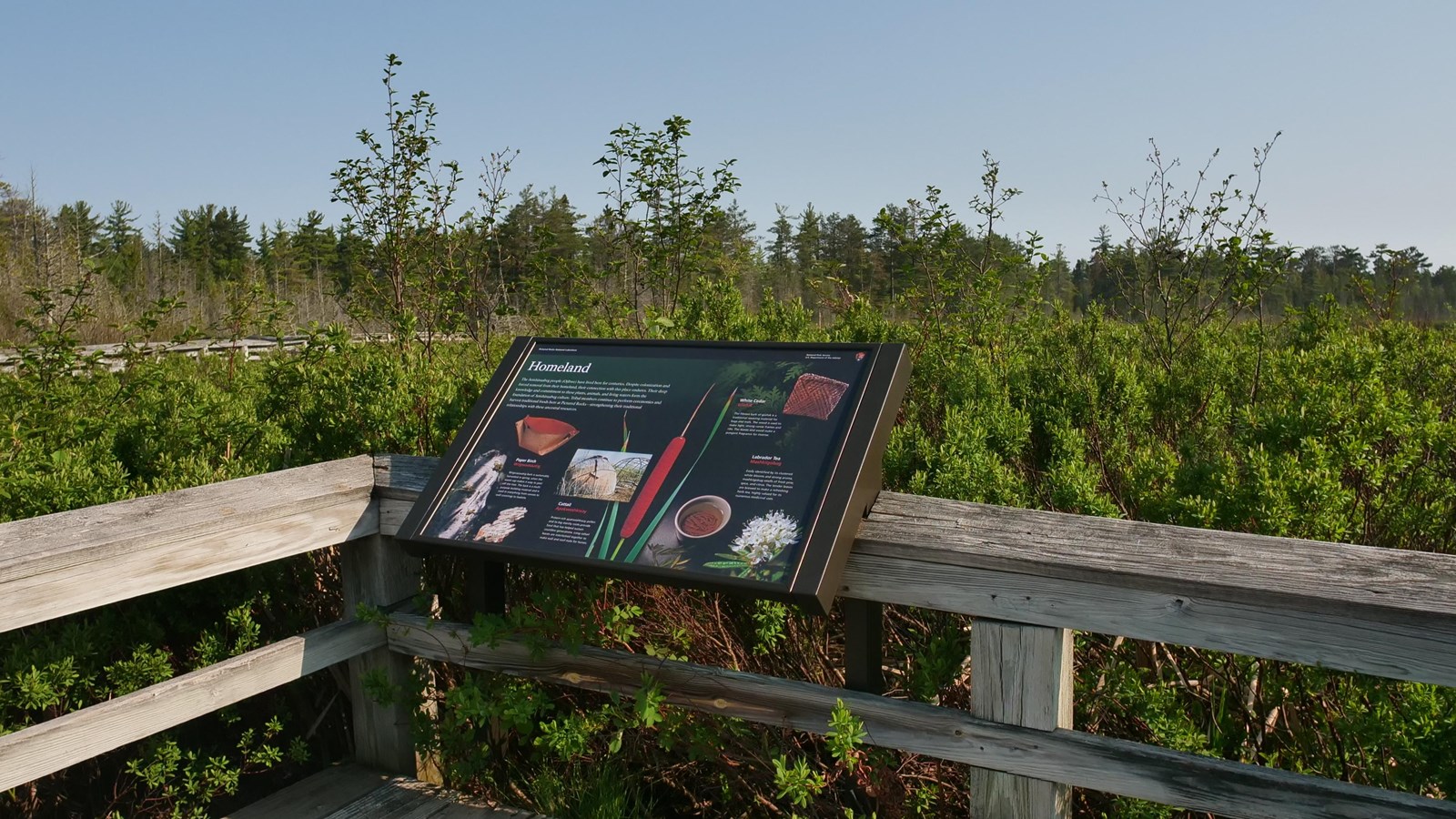Last updated: July 3, 2025
Place
Homeland Exhibit

Homeland
The Anishinaabeg people or (Ojibwe) have lived here for centuries. Despite colonization and forced removal from their homeland, their connection with this place endures. Their deep knowledge and commitment to these plants, animals, and living waters form the foundation of Anishinaabeg culture. Tribal members continue to perform ceremonies and harvest traditional foods here at Pictured Rocks—strengthening their traditional relationships with these ancestral resources.
Paper Birch
The Ojibwe word for Paper Birch is “Wiigwaasaatig.”
Wiigwaasaatig bark is sustainably harvested in spring, when the sweet sap makes it easy to peel off the tree. The bark is a multi-purpose building material and is used in everything from canoes to wall coverings to baskets.
Cattail
The Ojibwe word for Cattail is “Apakweshkway.”
Protein-rich apakweshkway pollen and its big starchy roots provide food that has helped sustain countless generations. Long cattail leaves are interlocked together to make wall and roof mats for homes.
White Cedar
The Ojibwe word for White Cedar is “Giizhik.”
The fibrous bark of giizhik is a traditional weaving material for bags and mats. The wood is used to make light, strong canoe frames and ribs. The leaves and wood make a pungent fragrance for incense.
Labrador Tea
The Ojibwe word for Labrador Tea is “Mashkiigobag.”
Easily identified by its clustered white blooms and strong aroma, mashkiigobag smells of fresh pine, spice, and citrus. The tender leaves are brewed to make a refreshing herb tea, highly valued for its numerous medicinal uses.
